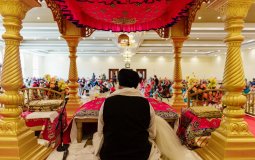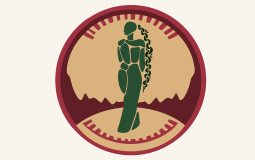Part of the Solution: A Family Violence Resource Guide for Gurdwaras
Why are our turbans gendered as superficial, fashionable, or decorative just because we wear makeup or dance—while men’s turbans are perpetual symbols of honor, pride, their dedication to their faith? We are harshly policed for how we look, how we dress, how we act, while we practice our Sikhi. Yet, regardless of what harm or violence they inflict, cis men do not seem to be.
All of these lessons I have come to embrace and recognise in my 26 years of existence as an evolving Kaur. Like little notes to Self, I hope they serve you too.
Parvyn’s work is informed by electronica and jazz, her background in Sikh devotional music and her training in classical Indian music and dance. Her debut solo album “Sa’”will be released worldwide in Aug 2021.
We all have an innate wisdom that guides us to return to our spiritual selves over and over again – a constant mantra, a daily rhythm, an inner beat that signals that return several times a day. It is a choice to listen.
I admire these women for following their instincts and living by their values. They did what they felt and knew was right, whether that was what was right for the liberation of their people, or the liberation of their own soul and being by following a passion or dream. And they pursued it, often by breaking gender and class norms.
Historically, Mai Bhago and Gadri Gulab Kaur, a freedom fighter from Sangrur who left her husband and the prospect of a safe life in the West to join the Ghadar movement and fight the British often come to mind.
Talking to her made me feel like I was talking to a lioness, not a middle-aged woman. Jaswant Kaur and her family have been at the borders for the last 25 days. She, and many other women and their families, journeyed from their pind (village) to Delhi via tractor.
Gurpreet spoke of Mata Bhag Kaur, Mata Sharan Kaur, and Mata Sulakhni, as well as fighters from 1984, weaving stories of their resilience that she remembers for inspiration. “These Sikh women have fought hard and long battles and there are many such stories that I have grown up reading about.”
Objective: The objective of this workshop is to assist participants in connecting with Guru Sahib on a personal level and creating enough familiarity, confidence, and love in connecting with Gurbaani that allows them to resist the patriarchy and misogyny present in many Sikh spaces. We want participants to leave understanding the necessity to ground our conversations in Gurbani, and also realize we can and must include Gurbaani and Guru Sahib’s voice in our analysis of Sikh history, rehat, Gurmat, and contemporary issues.










